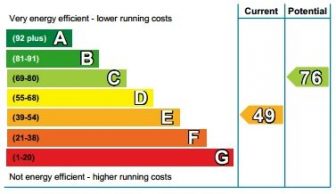 BNP Paribas Real Estate analysis of inner London data from the government’s non-domestic EPC register has highlighted the urgent need to upgrade stock against a backdrop of rising construction costs amid looming MEES energy efficiency regulation changes.
BNP Paribas Real Estate analysis of inner London data from the government’s non-domestic EPC register has highlighted the urgent need to upgrade stock against a backdrop of rising construction costs amid looming MEES energy efficiency regulation changes.
According to its review of the latest December 2022 figures, which is inclusive of buildings that are currently eligible for exemptions, it is estimated that:
- Up to 24% of inner London commercial stock could be unlawful for new lettings and unlawful to let from April 2023
- Up to 27% could, under proposed MEES regulation changes, be unlawful to let from April 2027. Just over 26% is rated C and could be unlawful to let from April 2030
- Only 23% of inner London stock is rated A+, A, or B and is currently fully MEES-compliant according to current legislation [see full breakdown in notes to editors]
The news comes as the Department for Business, Energy and Industrial Strategy’s latest report on construction materials costs revealed the price index for all construction work rose 11.2% year-on-year in December, with costs for non-domestic property construction rising by just under 15% in the same period. Moreover, the construction material seeing the largest price increase over 2022 was building insulation (+38.6%)
Minimum Energy Efficiency Standards (MEES) will apply to all privately rented property, making it an offence to continue to let a commercial space with an EPC worse than an E, even in the middle of a lease term.
Stephen Wolfe, head of commercial at BNP Paribas Real Estate, said: “The inflationary effects of post pandemic shortages, the Ukraine war, and the cost-of-living crisis have driven up energy and material prices, leaving many landlords at a standstill with rating changes on the horizon. Across London, the market and competition for occupiers is hot, putting the value of assets at an even greater threat. This is no time for landlords to sit on their hands, even super prime asset values are coming down, but further discounts will be expected if your space isn’t up to scratch.”
Donna Rourke, head of ESG and sustainability at BNP Paribas Real Estate added: “Many landlords are still in the dark about MEES changes. For others, there is a trade-off taking place with their occupiers on where the lease obligations lie in undertaking works. It’s crucial at this time to get works done and get it right, and given that there are such disparities between ratings, ensuring you consult with an expert is more important than ever.
“Improvements that we would recommend for those at a very minimum term include establishing responsibility first and foremost, ensuring your exemptions have been registered to secure the necessary time to make upgrades, and looking at modifications such as replacing boilers and windows, upgrading insulation, and adding solar panelling dependant on budget. This can marginally support an upgrade in rating and can protect and support rents and occupancy in the process.”
| Rating band | % of total by floor area |
| A+ | 0.02% |
| A | 4.24% |
| B | 18.90% |
| C | 26.25% |
| D | 26.61% |
| E | 16.38% |
| F | 4.38% |
| G | 3.22% |
[Source: DLUHC]


That’s approx 1.5m properties at say 1.5 persons to each = 2.25m homeless people to put up in hotels if they have the space.
Can someone tell the government so they can get prepared.
You must be logged in to like or dislike this comments.
Click to login
Don't have an account? Click here to register
Good thing it’s not actually law isn’t it (it’s only a proposal).
Wiping out 20% of your housing stock probably isn’t the smartest move by the Government… but they are pretty dumb.
You must be logged in to like or dislike this comments.
Click to login
Don't have an account? Click here to register